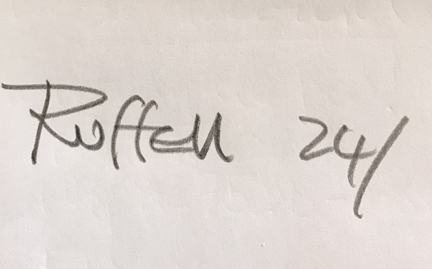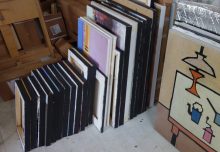COLLECTING ART

I often refer to the people who buy my art as ‘collectors’.
The term ‘collecting’ shows an intention to continue adding more art to the art that they already own. And the use of the phrase ‘art collector’ also implies that the person is an interested expert in the subject.
A referral to buyers as ‘collectors’ acknowledges them as experts who have made a good choice when the buy the art, and that they will probably want to have more in the future.
Of course you probably recognize that this use of the word ‘collectors’ is a cunning ploy to flatter and encourage them to buy over and over again.
Is that it?
Well ‘no’ and ‘yes’. ‘No’ because it isn’t just a cunning ploy. And ‘yes’ because it is true that they are interested buyers wanting a bit more than mere decoration for their walls.
You can tell this because they would be able to get just decorative stuff a fair bit cheaper than buying art directly from an artist. There are many commercial places and websites where you can get cheap prints that are very similar in size, subject, and colour. You can get cheap versions of famous old masters that would cost you millions if they were genuine. And even unsigned foreign print copies of current artists that are cheaper than buying direct from the artist or his agent.
[ HINT.. On a print look for the signature and number to see if the artist or their printer did it. The signature is probably added using a pencil. If in doubt ask for a signed Certificate of Authenticity.]
So the ‘collectors’ are saying that they are willing to pay a bit more to get something that the cheap print won’t have. And that is where and how they are flattering the artist.
They will also have had to find him or her. That possibly meant going to an exhibition or gallery that was showing their work. Or possibly searching for a specific term or signature on the web. Maybe they have seen another piece of art in someone else’s home or office, and found the artist by making a note of the contact details.
And so we respect and thank collectors very much for their interest, tenacity, and willingness to ‘collect’.
Even more.
I often get people contacting me with messages and photos of my work in their homes. Sometimes they have had a piece for years and other times they have just found an example somewhere. They don’t always just want to find out how much they can sell it for either.
One of the bonuses of this life of being an artist is that people who want to own and live with your creations are confirming that you got it right when you made it.
And we want to get it right for our own sakes. So the positive criticism that collectors give when they reward you with a purchase is reassuring and telling you that you succeeded. Possibly the most valuable factor for the artist is this feedback that comes from the ‘collector’ even if they never buy from you again.
Conclusion.
One of the very important messages that we have learnt, and try to share with anybody who is interested, is that making art is more than just pleasing yourself.
It adds a whole extra dimension to the creative act if the product of your act passes on the pleasure that you had when you were doing it.




